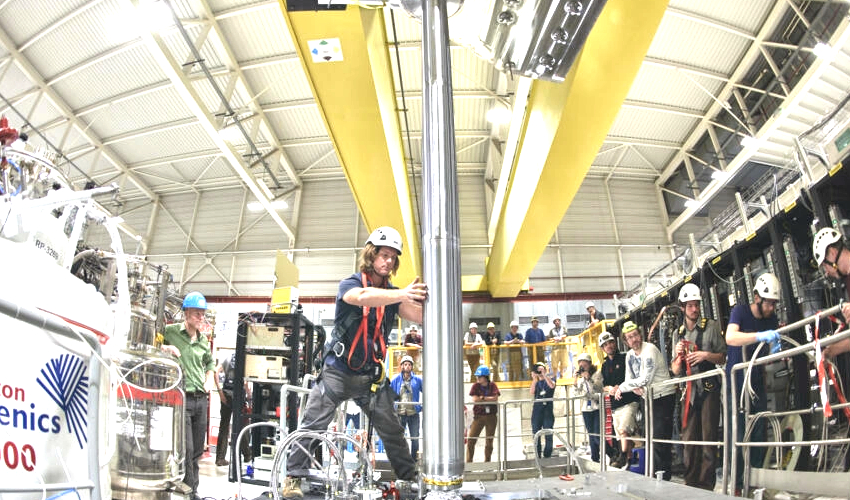Scientists have seen for the first time that antimatter particles fall down because of gravity.
This result shows that gravity causes antimatter to fall downwards, as predicted by Einstein's 1915 theory of relativity.
Antimatter particles are the opposite of the matter that makes up everything around us. When matter and antimatter meet, they destroy each other.
Scientists have long thought that gravity pulls antimatter down in the same way it pulls down regular matter. But a few scientists thought it might be different.
To find out the answer, scientists at CERN did a new experiment using a 25-centimeter-long cylinder called ALPHA-g.
The scientists put around 100 very cold antihydrogen atoms in the ALPHA-g trap. As they turned down the strength of the magnets, the antihydrogen particles escaped out either end of the bottle. The scientists then counted how much antimatter was destroyed at each end of the bottle.
Around 80 percent of the antihydrogen went out of the bottom, which is the same rate that regular bouncing hydrogen atoms would go out of the bottom if they were in the bottle. This result shows that gravity pulls antimatter down, just like Einstein's theory of relativity said it would.
The scientists also changed the strength of the magnets in more than a dozen experiments, to see how gravity affected antimatter at different rates. While the experiment shows that gravity does not push antimatter up, it does not prove that antimatter behaves in exactly the same way as regular matter.
Scientists say that this experiment is a huge step forward in our understanding of antimatter. But more precise measurements are needed to fully understand how gravity affects antimatter.



























